Agricultural emissions and the meat & dairy industry
Agricultural emissions are cooking the climate. Here’s everything you need to know about the intensive livestock industry, and its rising methane emissions.
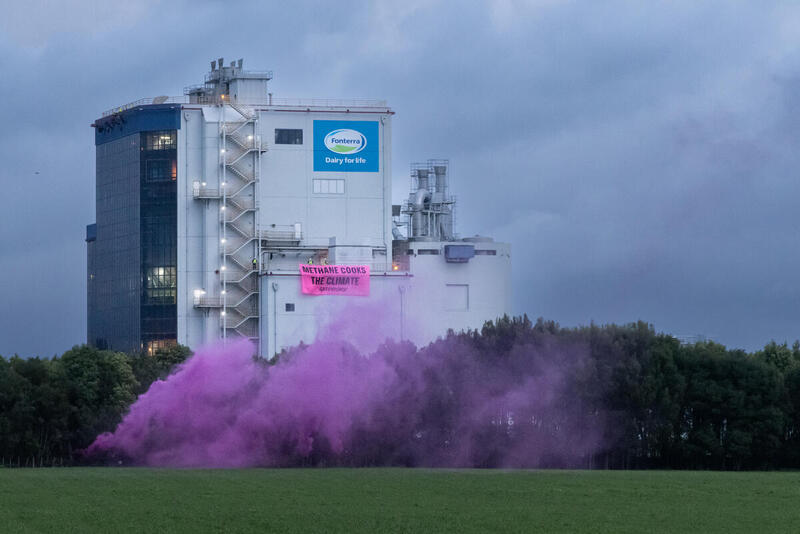
Agricultural emissions from industrial meat and dairy production are cooking the climate. Intensive livestock farming is expanding globally, leading to deforestation and rising methane emissions.
Meanwhile, disasters fuelled by climate change – storms, droughts, cyclones, and wildfires – are intensifying and becoming increasingly common. They are putting the food and agriculture sector at risk and jeopardising farm livelihoods.
You’ve heard about Big Oil’s role in fuelling the climate crisis – but did you know that the intensive livestock industry – AKA Big Meat and Dairy – are playing a big role in making it worse?
To add insult to injury, rich governments are right now doing the bidding of livestock industry lobbyists, and rolling back urgently needed climate action on agriculture.
Here’s everything you need to know about the intensive livestock industry, and how their actions are cooking the planet.
What is methane? Why is methane such a big deal?

Methane is a superheating greenhouse gas, 80 times more powerful than carbon dioxide over a 20 year period. The largest source of human-made methane emissions globally is the intensive livestock industry – large-scale farming of animals like cows, pigs and sheep.
Methane is a big deal for our climate because it’s so powerful, but it also stays in the atmosphere for less time. That means that it has a massive impact on global temperature increase, but also that if we reduce methane emissions rapidly, we can cool the climate within our lifetimes.
Who are the worst climate polluters in the meat and dairy industry?
Some of the worst climate polluters in the intensive livestock industry include:
1. JBS – the world’s biggest meat packer and worst agricultural polluter
Based in Brazil, JBS’ methane emissions are more than those of Shell and Exxon combined.
JBS are also complicit in destroying the Amazon rainforest to make room for more cattle ranches.

2. Fonterra – the world’s largest exporter of dairy products
Fonterra is New Zealand’s worst climate polluter.
Along with immense methane emissions, Fonterra is involved in pushing for weaker climate regulations, with its CEO Miles Hurrell chairing the notorious Global Dairy Platform in 2025.

3. Arla – the biggest dairy company in Europe
Arla produces huge amounts of methane from its milk supply.
Despite this, the company has no clear plan to cut methane emissions. Arla has also been accused of greenwashing. Its climate claims mislead consumers about the real impact of its dairy production.
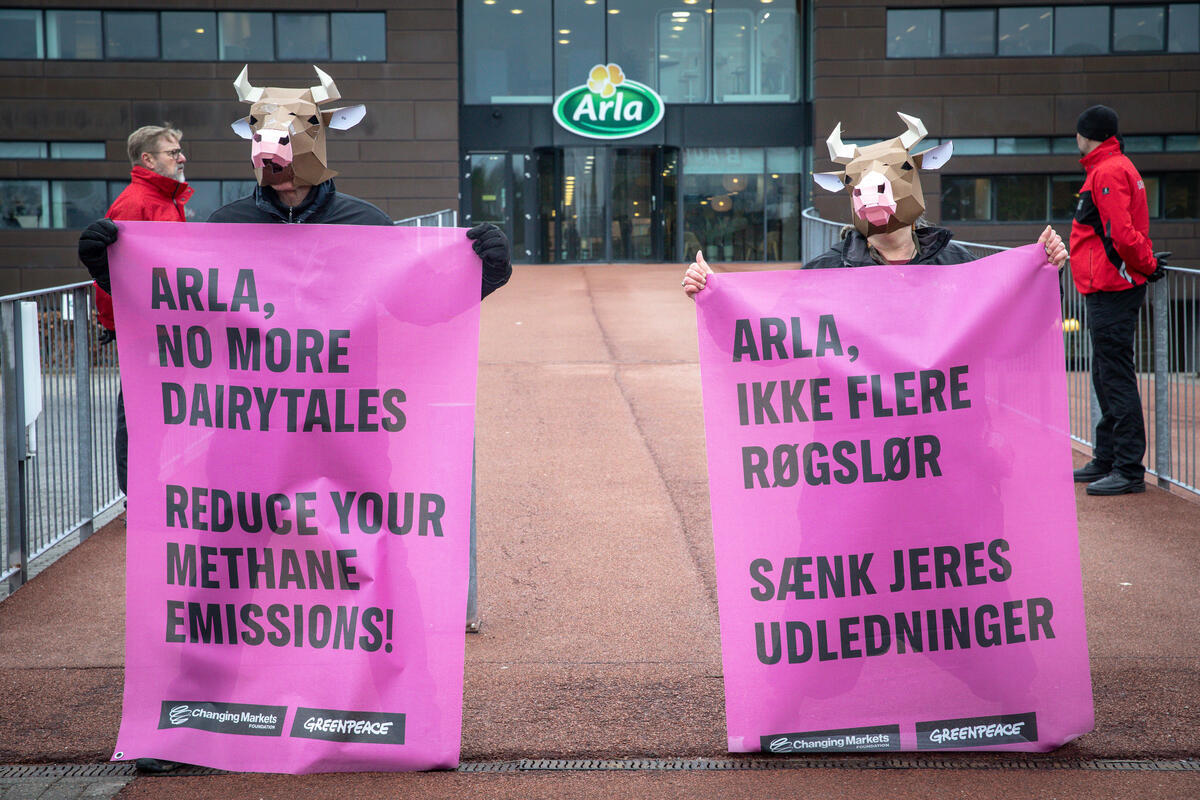
BRIEFING: Methane and COP30
Methane is the fastest way to slow global heating. It traps 80 times more heat than CO₂ over 20 years and is responsible for nearly a third of current warming.
But high-income, high-emitting nations such as New Zealand and Ireland are weakening their methane reduction targets under the misleading concept of “no additional warming” or “temperature neutrality.”
Greenpeace is warning that this risks undermining the Paris Climate Agreement, and breaching international law. A briefing for those attending COP30 is available below.
REPORT: Turning Down the Heat
The meat and dairy industry is sitting on a big dirty secret: its massive methane emissions. Between 1910 and 2015, there was an enormous increase in both the production and consumption of meat and dairy. Livestock is the single biggest source of human-made methane.
Reducing methane associated with meat and dairy is a critical lever that will influence how quickly or slowly the world heats up in the near-term. Cutting large amounts of methane through a shift in how we produce and consume meat and dairy is key, together with a fossil fuel phaseout, for an iconic victory against catastrophic climate change.
In this report, Greenpeace Nordic shows how changes in overproduction and overconsumption of meat and dairy could avert the worst of the climate crisis, reducing warming significantly by 2050.
Methane metrics: No additional warming
‘No additional warming’, GWP*, climate neutrality, and more
These are all terms used by the intensive livestock industry to justify why they shouldn’t have to deal with their outsized methane emissions. But they’re fundamentally flawed.
So why do big meat and dairy corporations and lobby groups love them so much?
What is ‘no additional warming’?
‘No additional warming’ is a political trick dressed up as science.
It pretends current methane emissions are fine – when in reality, they’re fuelling the climate crisis.
This controversial accounting trick is designed to justify continued high levels of agricultural methane emissions – even as science shows they must fall fast.
Agriculture industry lobby groups have pushed the concept of ‘no additional warming’ heavily, in an attempt to avoid having to deal with their outsized methane emissions.
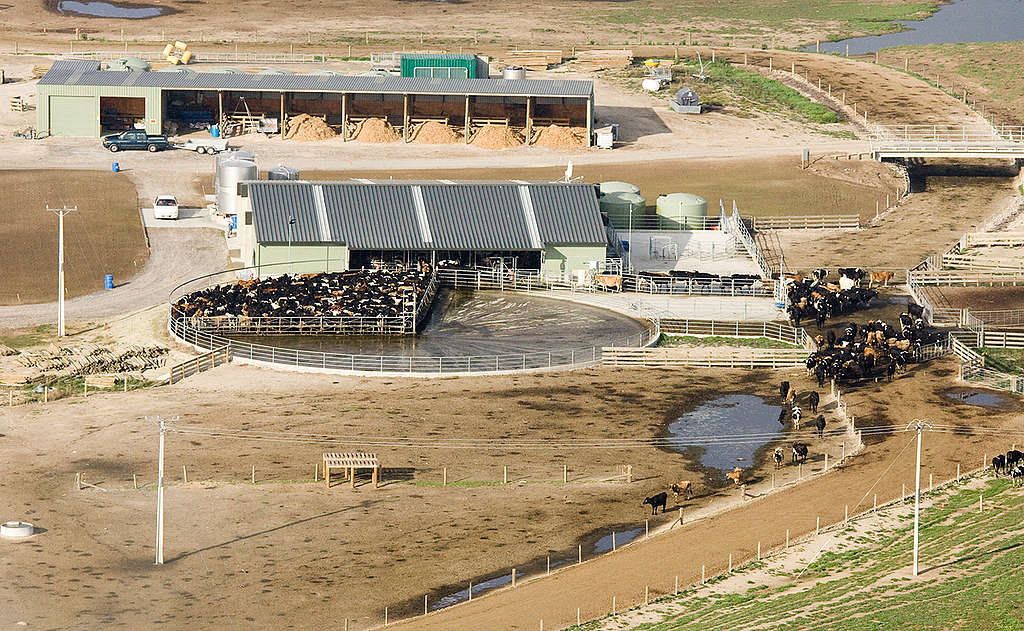
‘No additional warming’ resources
Below are some resources on ‘no additional warming’ and all things methane.
For jounalists
Are you a journalist and curious about ‘no additional warming’? Want to know more about why climate scientists and environmentalists are so concerned about it?
We’ve produced this media briefing on ‘no additional warming’ and methane emissions reductions to answer your questions!
For additional questions, please reach out to our press contact.
For policy-makers
Are you working on climate policy and wondering why ‘no additional warming’ and ‘temperature neutrality’ are being brought up?
Here’s a briefing for policy-makers on all things methane – and what good policy to tackle methane emissions from the intensive livestock industry should include.
For more information or to meet the team, get in contact.
Take action against agricultural emissions
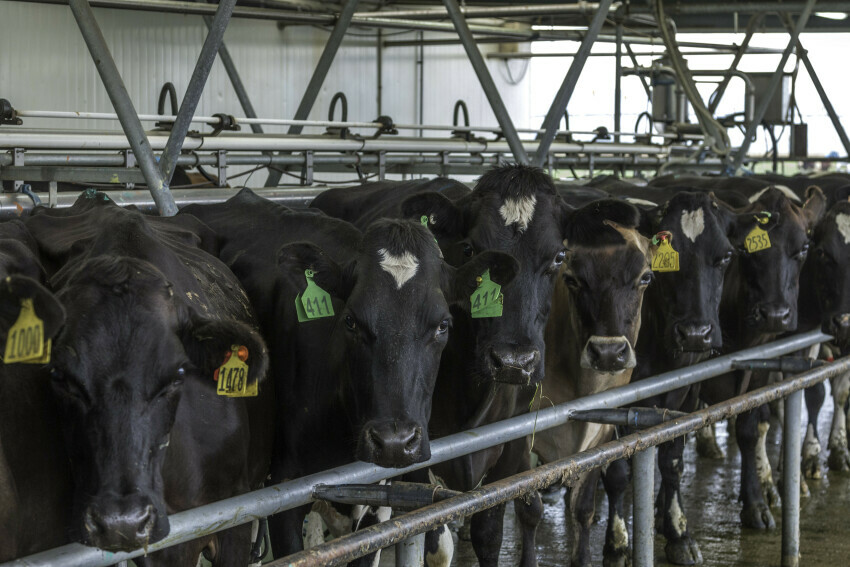
Prevent catastrophic climate change from superheating livestock industry emissions – sign the petition now.
Add your name!Frequently asked questions
It’s actually not hard to reduce agricultural methane emissions. We simply need fewer livestock, and less intensive methods of farming. A shift to more plant-based, ecological farming methods is both achievable and has many co-benefits for people, nature and animals.
To make that happen, we need decision-makers and world leaders to regulate the livestock industry, because voluntary efforts from the industry have proven not to be enough.
The easiest way to reduce agricultural methane emissions is to reduce stocking rates. That means fewer cows, sheep, pigs, or chickens creating methane.
Unfortunately, there are not currently any technological solutions to reduce methane emissions at the scale or speed necessary to prevent climate chaos. That means we have to do what we can with the tools and knowledge already at our disposal.
Ultimately, we need to diversify land use, away from intensive livestock – but that doesn’t mean stopping farming. We just need to change the way that we farm to ensure that our food systems are sustainable into the future.
Already, some farmers are shifting toward ecological, plant-based farming practices. It is not only possible, but it has many benefits for both people and the planet. But farmers need support to be able to scale up these practices.
‘No Additional Warming’ is a problematic concept used to justify maintaining current levels of climate pollution. It suggests that as long as no extra global warming is produced – i.e. as long as levels of agricultural methane emissions remain stable – it’s okay to continue polluting the climate. It basically resets the status quo, enabling business as usual for agribusiness.
Agribusiness has pushed for methane emissions targets to be set using the ‘no additional warming’ approach, arguing that because methane is a short-lived gas, they shouldn’t be responsible for the pollution they’re causing. This is patently false – methane is much more powerful than carbon dioxide, and does a significant amount of damage over its lifetime. In fact, reducing methane emissions rapidly is the climate emergency brake we need to prevent catastrophic climate change.
The agribusiness lobby ultimately benefits from ‘No Additional Warming’ – while the rest of us, including farmers and rural communities, suffer from the consequences of weakening action on climate change.
Agribusiness benefits because they get to continue making billions from their business-as-usual approach of continuously producing more livestock and more pollution.
New Zealand has announced that it will rewrite its climate laws to adopt a new, weaker, methane target aligned with ‘No Additional Warming’. It will also amend the law so that future methane targets are required to be set in line with ‘No Additional Warming’. The Government aims to do this by the end of 2025.
Ireland is also looking to do the same, likely within the same timeframe. Paraguay and Uruguay are also looking into the concept.
Primarily, this is being adopted by wealthy export-driven nations with high levels of livestock emissions, as it means they can get away with doing less on climate change.
The Intergovernmental Panel on Climate Change (IPCC) uses a tool called GWP100 to measure methane emissions. This is the tool used for reporting on methane emissions to the UN Framework Convention on Climate Change (UNFCCC). It is the globally-agreed metric for measuring methane. The key difference is that it uses a baseline of not emitting – i.e. pre-industrial levels – rather than arbitrarily setting a baseline in the recent past.
Methane is an extremely powerful greenhouse gas. It is 80 times more powerful than carbon dioxide over a 20 year period. It is a short-lived gas, so stays in the atmosphere for less time than carbon dioxide, but still has a significant impact on the climate.
Scientists have called methane our ‘emergency brake’ for preventing the worst of the climate crisis. Because it is a short-lived gas, if we reduce methane emissions now and keep them down, we can slow global temperature rise within our lifetimes. Every fraction of a degree matters when it comes to climate change.
-

Luxon “goes full Trump” with climate-denying methane backdown
The NZ Government will rewrite NZ’s once bipartisan climate change law to weaken methane targets and exclude agriculture from the ETS.
-
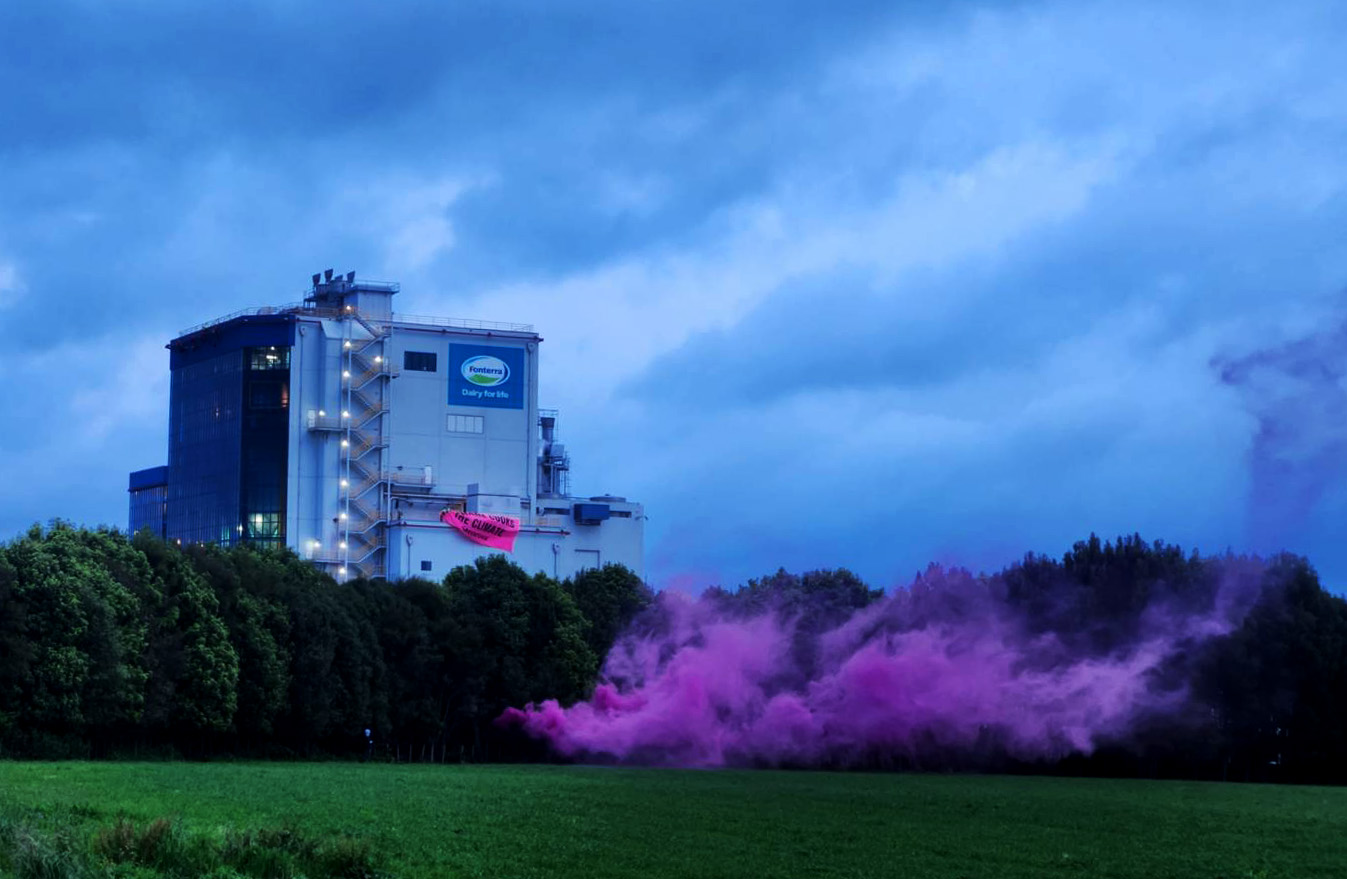
What is methane? All about the invisible gas that cooks the climate
Methane you ask? A large chunk of methane emissions come from agriculture, particularly the dairy industry. But what is methane, and why is it so important?
-
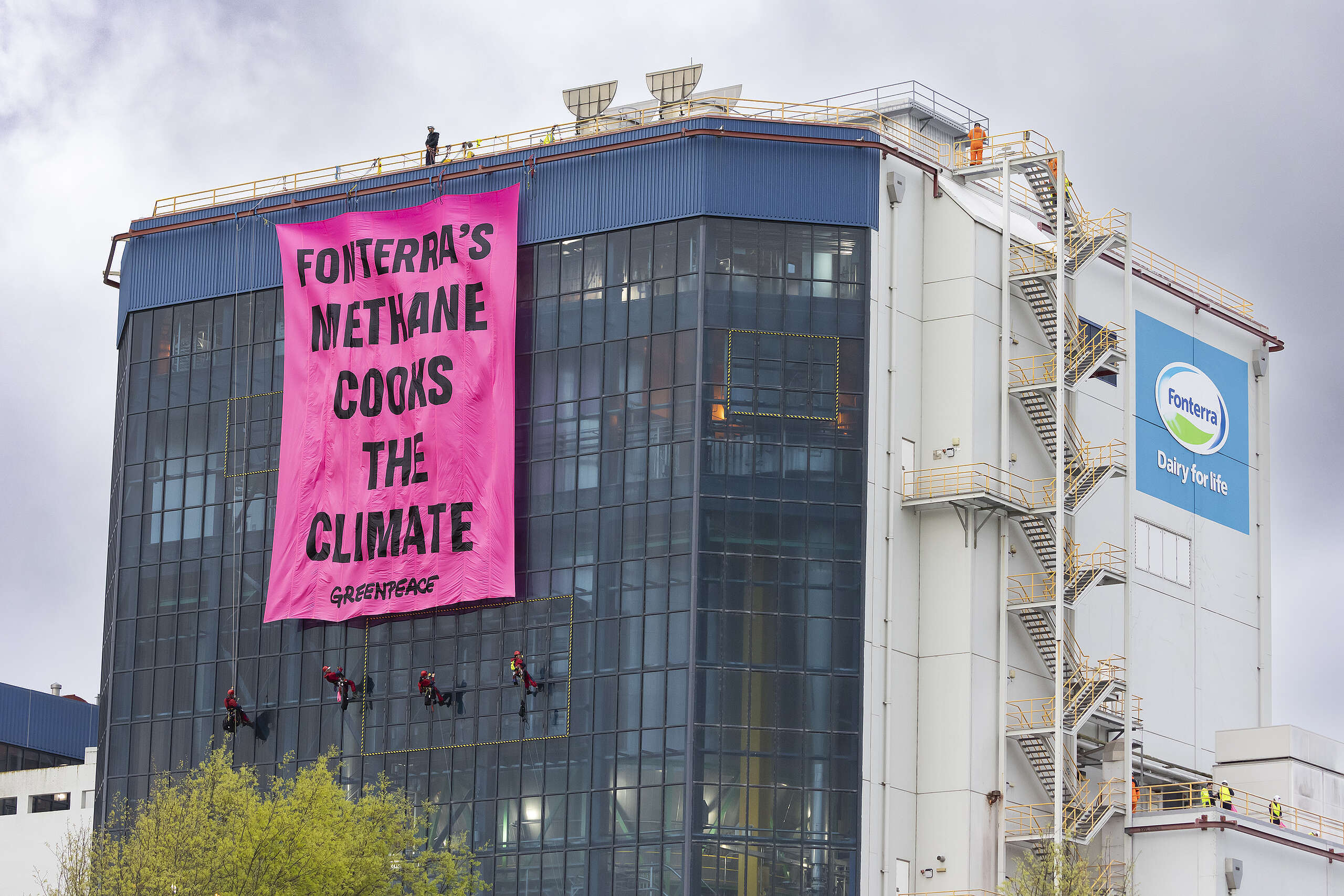
GWP*: the tool that the meat and dairy industry is using to manipulate math on climate action – and how we can stop them
GWP*, no additional warming, and other clever accounting tricks are used by the dairy industry to get out of climate action – but what do they mean?
Social media: Taking on the livestock industry
Below are some recent posts from Greenpeace Aotearoa about the livestock industry. Watch, share and follow to get involved!
